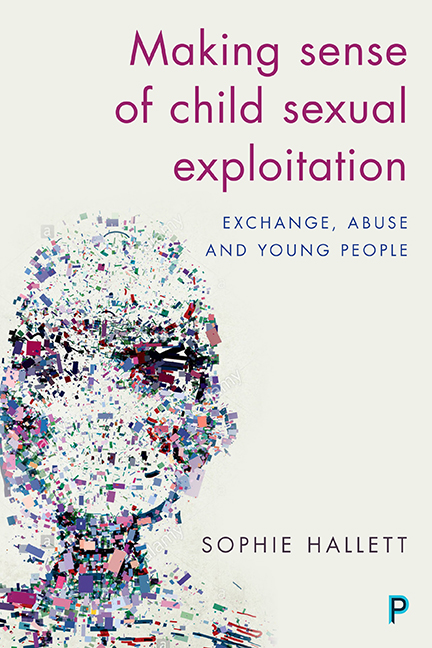Book contents
- Frontmatter
- Dedicaton
- Epigraph
- Contents
- Acknowledgements
- Introduction
- one From ‘child prostitution’ to ‘child sexual exploitation’: an overview
- two Vulnerabilities
- three Risk
- four Exchange and abuse
- five Responses, recognition and reciprocity
- Conclusion: child sexual exploitation – agency, abuse and exchange
- References
- Index
Introduction
Published online by Cambridge University Press: 05 April 2022
- Frontmatter
- Dedicaton
- Epigraph
- Contents
- Acknowledgements
- Introduction
- one From ‘child prostitution’ to ‘child sexual exploitation’: an overview
- two Vulnerabilities
- three Risk
- four Exchange and abuse
- five Responses, recognition and reciprocity
- Conclusion: child sexual exploitation – agency, abuse and exchange
- References
- Index
Summary
In 2009, ‘child sexual exploitation’ officially first entered UK social care policy and practice lexicon. Its introduction into public discourse has been slower, occurring mainly on the back of serious case reviews and high profile criminal trials in Rotherham, Rochdale, Oxford and Derby in 2013 and 2014 (see Jay, 2014; Ofsted, 2014). Around the same time, police Yewtree investigations into historical sexual abuse cases by those in power and with celebrity, symbolised by ‘the Jimmy Savile case’, meant that ‘child sexual abuse’ and ‘child sexual exploitation’ featured almost daily in UK national news reports. Concerns around young people's sexualised behaviours, the uses and abuses of social media and the risk of ‘grooming’ have also been raised. UK society has discovered what was unknown, and ‘CSE’, as it is most often referred, alongside its synonym ‘grooming’, is talked about as an emerging form of abuse: a new social problem.
Yet child sexual exploitation is not new. As I will outline, young people abused through the exchange of sex has a lengthy social history – indeed the past 100 years have seen it feature as a re-emerging subject of welfare policy, practice and public concern; and one resurfacing in various guises (see Brown and Barrett, 2002). Concerns and panics around young people's sexuality – when it is legitimate, when it is abused – are also not new (see Hebdige, 1988; also Phoenix and Oerton, 2005). I do not pass comment on whether we are in the throes of a new ‘moral panic’, as some have argued (see Cree et al, 2012); however, it is clear that, while it is not possible to know with reliability the scale of the problem, we can be sure that the harms experienced by the young people in these sorts of circumstance are significant.
But what is ‘child sexual exploitation’? What makes it different to other forms of child sexual abuse and why has the terminology and the issue itself taken so long to appear in social care policy and public awareness and understanding? This book aims to provide an empirically and sociologically informed answer to these questions.
- Type
- Chapter
- Information
- Making Sense of Child Sexual ExploitationExchange, Abuse and Young People, pp. 1 - 10Publisher: Bristol University PressPrint publication year: 2017



